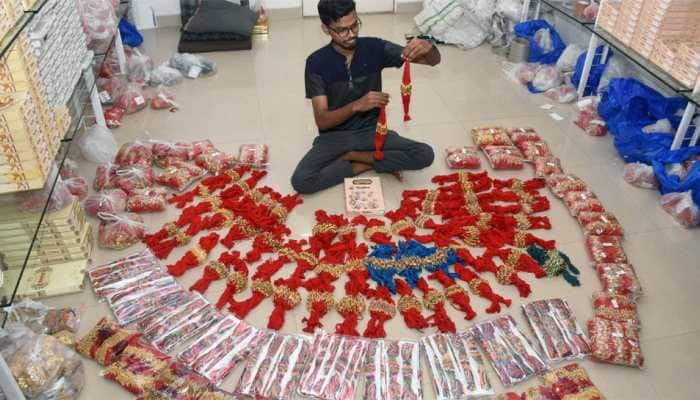Diwali celebrations leave Delhiites gasping for breath, data shows AQI shot up every year
The bursting of firecrackers on the occasion of Diwali impacted the air quality severely and led to low visibility in the national capital on Friday morning.
- Delhi’s overall air quality index was 617 on Friday morning.
- The residents of the national capital violated the ban on firecrackers forcing the AQI to plummet into 'hazardous' category.
Trending Photos
) (Credits: ANI)
(Credits: ANI) New Delhi: As a thick blanket of smog shrouded the skies of Delhi on Friday (November 5, 2021), several people in the national capital complained of itchy throats and watery eyes. The Delhiites woke up to a worrying AQI of 617 today.
Even after several appeals from the Arvind Kejriwal-led Delhi government and a Supreme Court order, the residents of the national capital violated the ban on firecrackers forcing the AQI to plummet into the ‘hazardous’ category.
According to a News18 report, a comparison of the last few years’ data to the current year revealed that the Delhiites haven’t learned anything from their previous mistakes. The data revealed that nothing much has changed about the toxic city skies around this time of the year.
Back in the year 2017, despite a Supreme Court ban on the sale of firecrackers in the National Capital Region (NCR), the residents celebrated the festival of lights by busting an enormous amount of crackers giving way to thick haze and noise. That year the AQI in the city was recorded at 367 the very next day. The nearby regions including Gurgaon, Noida, and Ghaziabad also faced similar conditions.
A year after that, in 2018, the Delhiites continued on the same path which resulted in AQI of 302 on the night of Diwali. That year, the court had allowed the residents of the national capital to burst crackers from 8 pm to 10 pm only, however people defied these rules and the air quality in the city started deteriorating sharply after 7 pm. The AQI was 281 at 7 pm and rose to 296 at 10 pm.
In a dramatic increase, the average AQI of 281 on Diwali deteriorated to a shocking 642 the next day and remained in the “severe” category on 3 consecutive days.
Next year, the national capital, and neighbouring areas like Noida and Ghaziabad, recorded an AQI of 306 after Diwali. 2019 was no better than 2018 as the average AQI in the next 24 hours that followed was 337, and 368 and 400 in the next two days.
A similar narrative was followed a year after that. In 2020, the court again placed a ban on crackers and the residents, once again, ignored the ban pushing the AQI to 414. Numerous areas of the national capital including Delhi University, Pusa Road, Lodhi Road, Mathura Road, IIT-Delhi, Indira Gandhi International Airport (Terminal-3) and Ayanagar recorded air quality in the ‘severe’ category with an AQI of 479, 433, 392, 427, 398, 468 and 424, respectively.
Finally, this brings us to the current year, 2021 when Delhi’s overall air quality index was 617 on Friday morning and entered the “hazardous" category. The capital city’s 24-hour average air quality index (AQI) stood at 382 on Thursday, up from 314 on Wednesday, according to the SAFAR.
Stay informed on all the latest news, real-time breaking news updates, and follow all the important headlines in india news and world News on Zee News.
Live Tv







)
)
)
)
)
)
)
)
)
)
